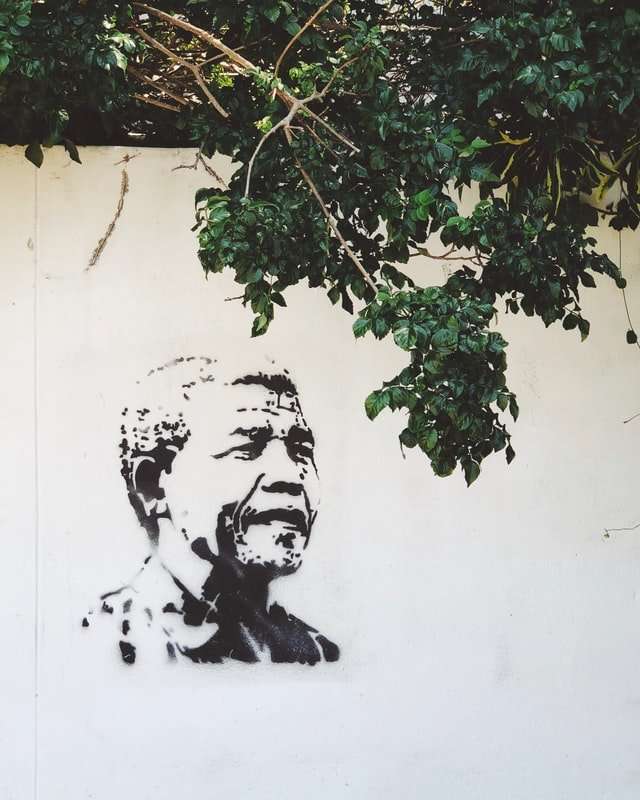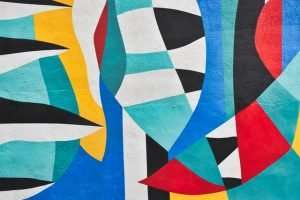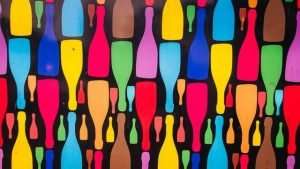The idea of translucence is an idea I want to talk about. Translucence is a property of art, and it is also a property you can learn. The idea of translucence is complicated and hard to describe. But I will try anyway.
Translucence comes from Latin, and means “to shine through.” Translucence is when something shines through, like light shining through glass or water or fog. It’s not about being transparent, but about being translucent.
Translucent things are not transparent; they are translucent.* Translucence requires opacity as well as transparency: the object must block some light from passing through, but it must also allow light to pass through it.**
A translucent object allows some light to pass through it and also reflects some light. Light behaves in many different ways when it is reflected off a surface. It might be absorbed by the surface, so that we see darkness instead of light. Or the light might bounce off the surface in another direction (re-reflection). Or the surface might split the light into colors (diffraction), or bend the light (refraction), or scatter the light (scattering), or do all of those things at once.
Translucence
The most obvious characteristic of translucence is the way it allows us to reveal and conceal at the same time. The proper use of translucence allows us to show what we want, when we want, and hide what we don’t want. Despite this incredible power, translucence is an under-used tool for the artist.
What is translucence? Translucence is a method of painting in which selected areas are painted more thinly than other parts. This results in some areas being opaque and others being translucent. The purpose of this exercise is to learn to use translucence as another tool in our arsenal as painters – one that can be used to help organize our compositions, create visual flow within a painting and draw the viewer’s eye through the painting.
When we think of translucency, we usually think about glass or water and how light can pass through them. We do not usually think about paint as a translucent medium – yet it is. Painting with transparent colors on top of one another creates this effect, especially when they are painted in thin layers.
If you are creating art, or anything else, what can you do to make it more translucence?
The word translucence is borrowed from its use in the field of chemistry. Chemistry has an exact definition for translucence that is detailed and mathematical. I will not be using that definition; this essay uses the word with a more general meaning. In particular, there is no requirement for light to actually pass through a translucent thing.
This blog will focus on the more general concept of translucence and less on how it is achieved in chemistry.
A transparent object allows light to pass through it easily, so we see whatever is on the far side of it clearly. A translucent object does not allow light to pass through it as easily, so we perceive both it and whatever is behind it at the same time. In other words, a translucent object’s presence makes it harder to see what is behind it.
Google Translate has improved a lot in the last few years. When I first wrote this post, Google Translate was so bad that it could barely translate a single sentence correctly. Now it can barely translate a full paragraph correctly.
And yet, even though I’ve revised this post to make it more readable, as I go through it I find myself making all sorts of tweaks to remove awkward phrasing, or to add extra words to be sure that the meaning is clear, or to change punctuation to make the structure clearer.
Trying to write a good, clear passage in English is not just about getting your ideas into words. It is about trying to make your words into good ideas.
A lot of translucence is about clarity. Just as you want your code to be clear, you want your prose to be clear. But there is also a different kind of translucence: the kind where you are not talking about yourself at all. This is most obvious when you are writing about other people. When you are writing about other people, you want everything you write on their behalf to sound like them . That’s one way that translucence can get really complicated—when you’re trying really hard to make something actually sound like someone else would say
Hi, my name is Andrew Johnson and I have been a professional artist for over 25 years. While working as an illustrator I started to study the great paintings. My purpose was to learn how they were made and what techniques were used to create the effects that were so pleasing to the eye.
After many years of research I discovered a process and a set of principles that allow anyone to produce art that is both pleasing and meaningful. I call this process Translucence™.
Translucence is a new way of looking at art, it is an alternative vocabulary for producing fine art that has long been used by masters such as Rembrandt. It may be new to you but it has been used since the dawn of time by every culture on earth in their visual expression.
The translucence process allows anyone who studies it to produce work that is immediately engaging and emotionally fulfilling. The process creates images where the light source illuminates the subject from within instead of upon it from without. This gives images depth and meaning by giving them context, a place in time and space where all things exist together, thereby making them more real for us.”
Translucence is the appearance of the light that passes through the object. The more translucence, the clearer and lighter the objects appear.
Translucence is the most basic element in art. Every other element (line, color, texture, form) can be created by manipulating translucence. To create an image with no translucence is like creating a building without windows or doors.
A student said to his teacher, “Master, I have studied hard, but still cannot draw as well as my friend.”
“Which friend?” asked the master.
“The one who paints in a simple style,” said the student.
“Oh,” said the master. “You mean the one who paints green apples as if they were red?”
“Yes,” said the student. “How did you know?”
“Because you have mastered the technique of painting green apples,” said the master, “but not yet that of painting red ones.”



